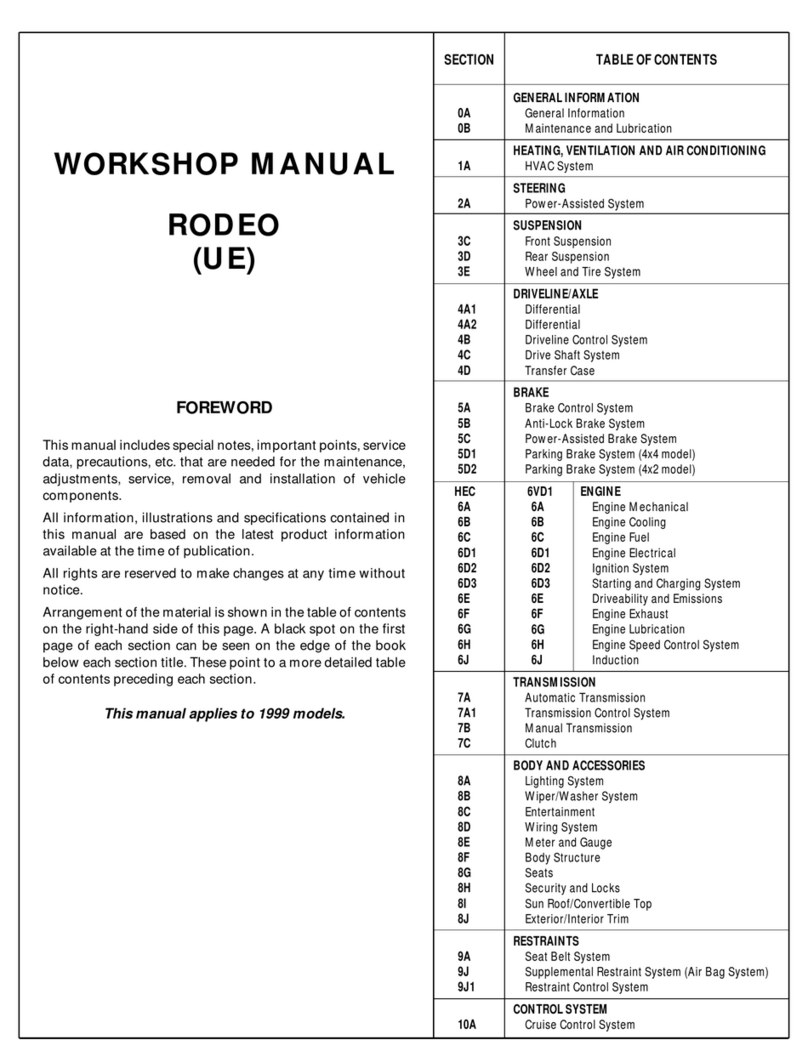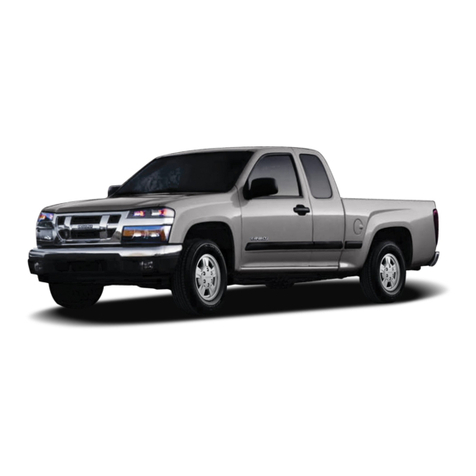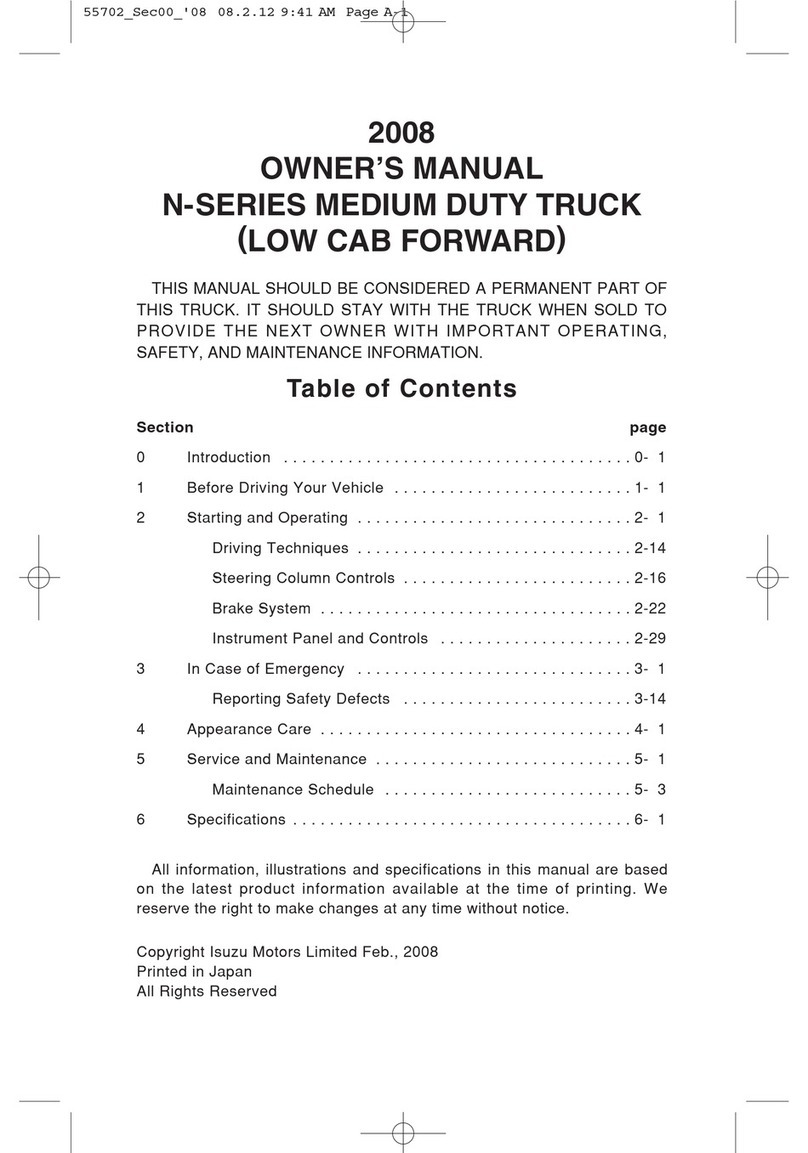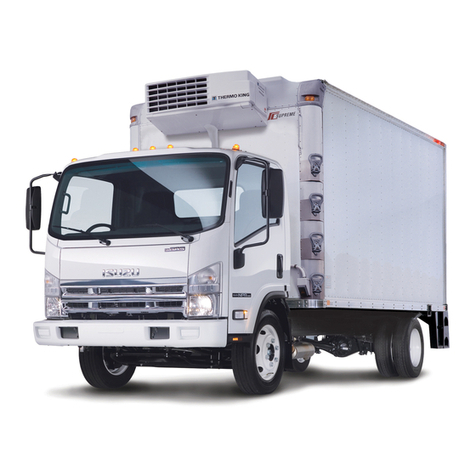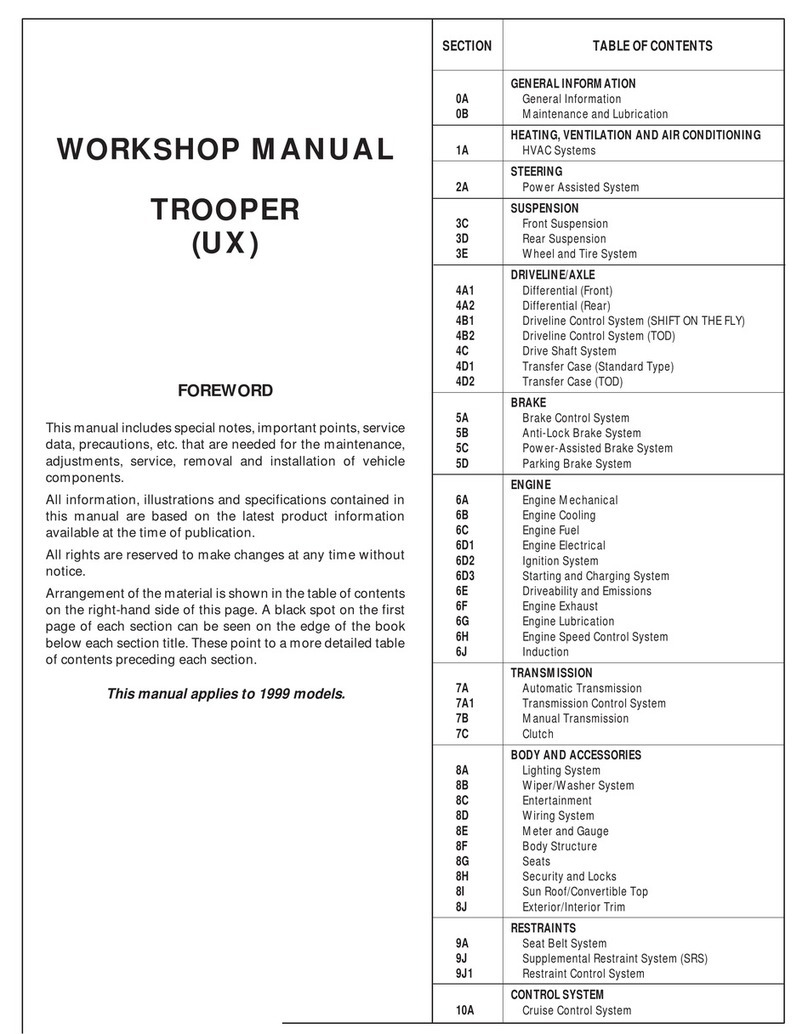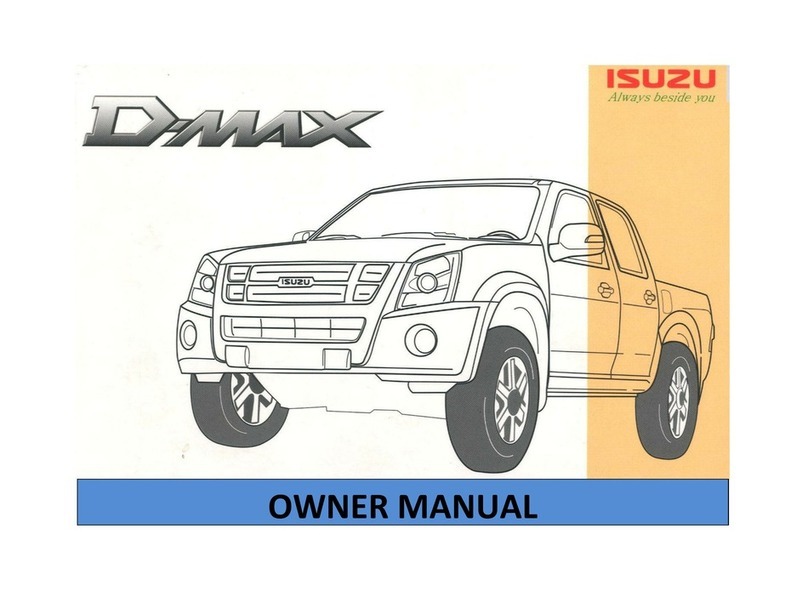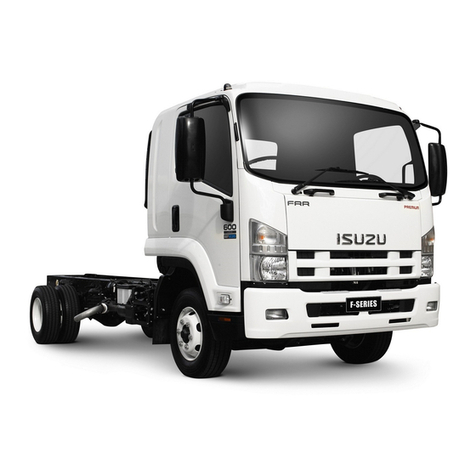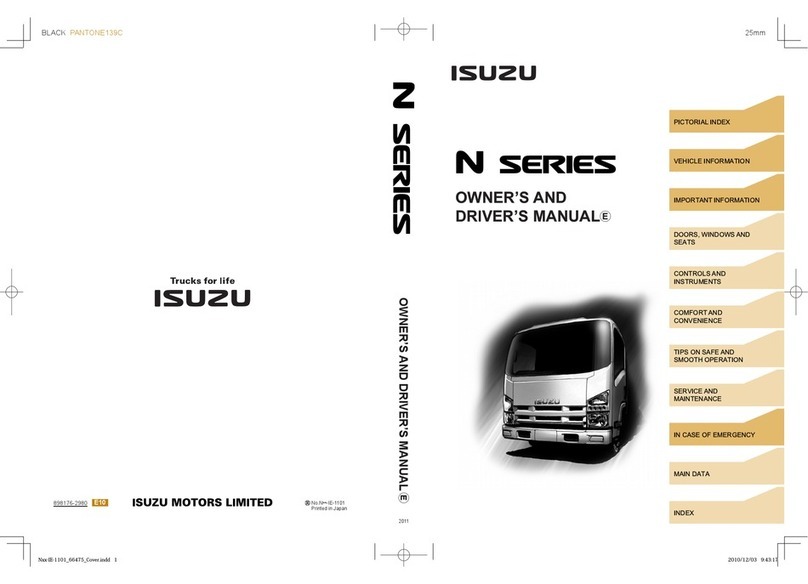0A–1
GENERAL INFORMATION
TROOPER GENERAL INFORMATION
CONTENTS
General Information 0A. . . . . . . . . . . . . . . . . . . . .
Maintenance and Lubrication 0B. . . . . . . . . . . . .
GENERAL INFORMATION
CONTENTS
General Repair Instruction 0A–1. . . . . . . . . . . . . . . .
Illustration Arrows 0A–2. . . . . . . . . . . . . . . . . . . . . . .
Identification 0A–3. . . . . . . . . . . . . . . . . . . . . . . . . . . .
Theft Prevention Standard 0A–5. . . . . . . . . . . . . . . .
Lifting Instructions 0A–10. . . . . . . . . . . . . . . . . . . . . . .
Standard Bolts Torque Specifications 0A–13. . . . . .
Abbreviations Charts 0A–14. . . . . . . . . . . . . . . . . . . .
Service Parts Identification Plate 0A–15. . . . . . . . . .
General Repair Instruction
1.If a floor jack is used, the following precautions are
recommended.
Park vehicle on level ground, “block” front or rear
wheels, set jack against the recommended lifting
points (see “Lifting Instructions” in this section), raise
vehicle and support with chassis stands and then
perform the service operations.
2.Before performing service operations, disconnect
groundcablefrom thebatterytoreducethechanceof
cable damage and burning due to short circuiting.
3.Use a cover on body, seats and floor to protect them
against damage and contamination.
4.Brake fluid and anti–freeze solution must be handled
with reasonable care, as they can cause paint
damage.
5.The use of proper tools and recommended essential
and available tools, where specified, is important for
efficient and reliable performance of service repairs.
6.Use genuine Isuzu parts.
7.Used cotter pins, plastic clips, gaskets, O–rings, oil
seals, lock washers and self–locking nuts should be
discarded and new ones should be installed, as
normal function of the parts cannot be maintained if
these parts are reused.
8.To facilitate proper and smooth reassembly
operation,keepdisassembledpartsneatlyingroups.
Keeping fixing bolts and nuts separate is very
important, as they vary in hardness and design
depending on position of installation.
9.Cleanthepartsbeforeinspectionorreassembly.Also
clean oil ports, etc. using compressed air, and make
certain they are free from restrictions.
10.Lubricate rotating and sliding faces of the parts with
oil or grease before installation.
11.When necessary, use a sealer on gaskets to prevent
leakage.
12.Carefully observe all specifications for bolt and nut
torques.
13.When removing or replacing parts that require
refrigerant to be discharged from the air conditioning
system, be sure to use the Vehicle Refrigerant
Recovery and Recycling Equipment (VRRRE) to
recover and recycle Refrigerant–134a.
14.When a service operation is completed, make a final
check to be sure the service has been done properly
and the problem has been corrected.
15.SUPPLEMENTAL RESTRAINT SYSTEM
The vehicle is equipped with a Supplemental
Restraint System. (SRS)—Air Bag.
This system is not to be serviced without consulting
the appropriate service information.
Consult Sections 9J1 and 9J “SRS System” if work is
tobedone onthefront of thevehiclesuch asbumper,
sheet metal, seats, wiring, steering wheel or column.
Also review SRS system information if any arc
welding is to be done on the vehicle.
The SRS system equipped vehicle can be identified
by:
1. “AIR BAG” warning light on the instrument panel.
2. A Code “J” or “K” for fifth digit of vehicle
Identification Number.
